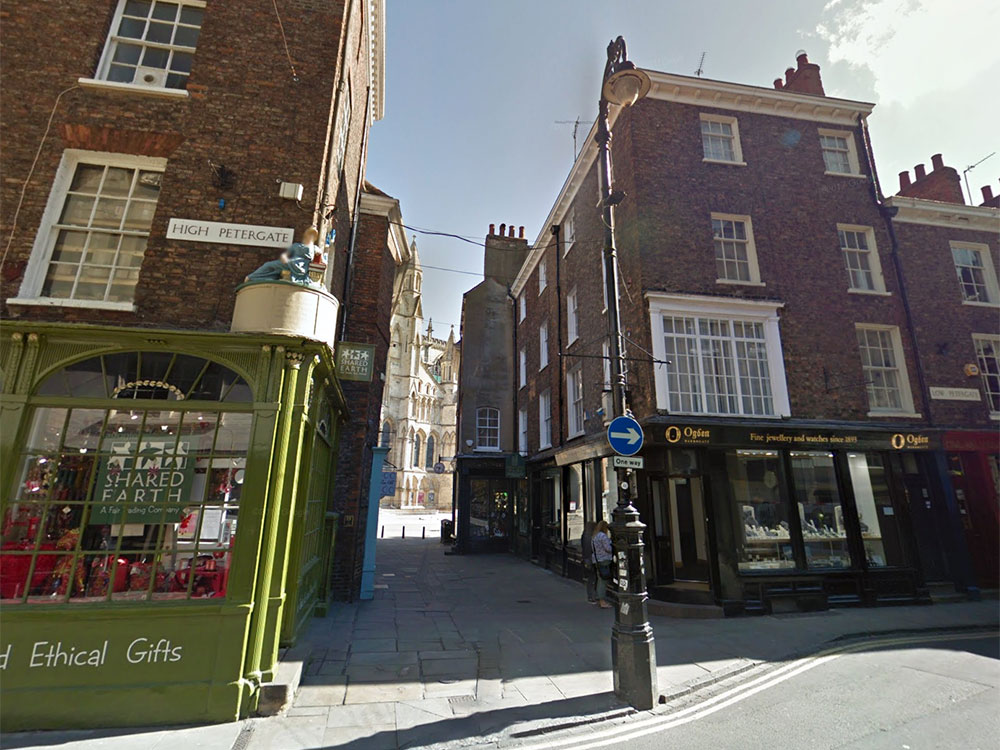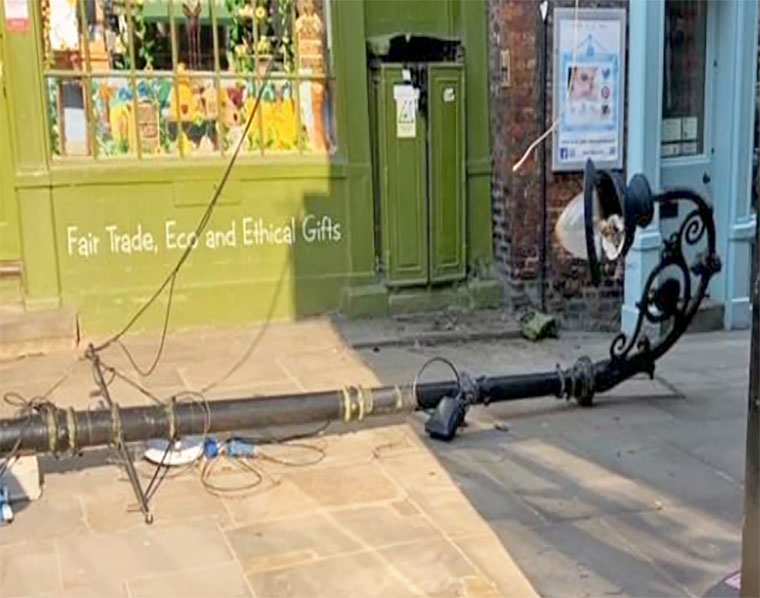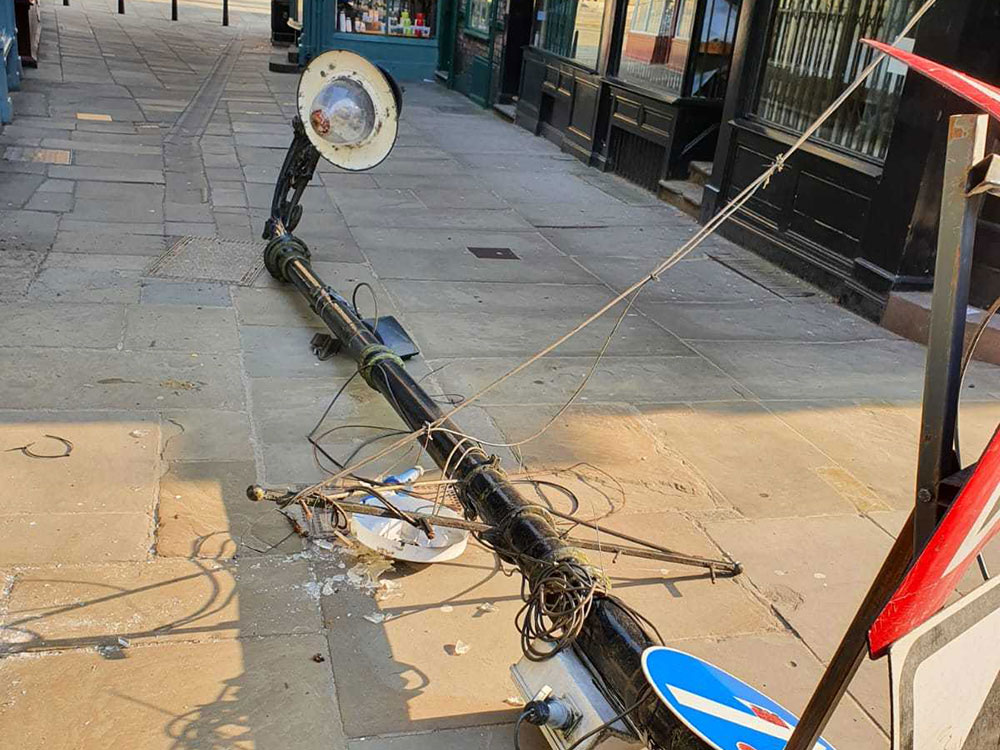An “irreplaceable” historic lamppost yards from York Minister – believed to be the last of its kind in the city – is set to be repaired after it was knocked down by a HGV.
The cost of repair is significantly higher than replacement, but council officers believe the price is worth paying to preserve the “unique heritage asset”, thought to be around 120 years old.
The cast iron ornate street light, which is well photographed because the Minster forms a backdrop, was hit by a wagon in March.
Street lighting officers would normally replace a damaged post with a tubular steel column, which is less likely to collapse.
This would cost £10,000, but senior councillors are being urged to repair the lamppost, which is between High Petergate and Minster Gates, using a specialist at a cost of £33,000.
The council said it would seek reimbursement through the driver’s insurance company, but the full cost may not be recoverable and any shortfall would have to be made up by the authority.
According to the council report: “This is the last remaining historical cast ornate column of this nature in York city centre, possibly even the wider York area, certainly at this height and with the type of scroll bracketry incorporated into the column make up.”
Early electric

Council conservation officer Edward Freeman said: “The Minster Gates lamp post is an irreplaceable historic asset as a sole surviving example of early electric street furniture.
“It contributes to the character and appearance of a site of the highest heritage sensitivity.”
The column will also be moved by a few metres and protected with bollards to prevent it being damaged again.
City of York Council’s executive committee is being asked to approve the proposal at a meeting on Thursday, June 16.
In April, council chiefs said the damage was so severe that “repair may not be possible” and that it would “only be considered if we can ensure the post will be totally safe in the future.”
Independent councillor Mark Warters then urged the council via email: “I don’t believe there can be any justification whatsoever for an inferior, cheap steel column going up in this location in the city centre.
“If as a city there are still aspirations to gain World Heritage Status then this needs pursuing properly.”
York is bidding for Unesco World Heritage site this year, after being rejected in 2011 after a previous attempt.
[tptn_list limit=3 daily=1 hour_range=1]

History of the lamppost
The casting of the damaged lamppost, which is of late-Victorian/Edwardian-era art nouveau-influenced design, has a maker’s plate which has not been deciphered due to build-up of paint.
York was home to the distinguished Walker Iron Foundry, founded in 1837.
John Walker was appointed iron founder to the Queen in 1847, and much of their high quality work survives in the city, including the gas lamp posts and railings to the Minster fronts and St Leonard’s Place.
John Shaw, chairman of the Yorkshire Architectural and York Archaeological Society has researched the history of street lighting in the city.
He identified examples of the distinctive iron art nouveau lamp posts across the city centre in images from the early decades of the twentieth century, installed following the opening of York Electric Lighting Station in Foss Islands in February 1900.
